AUSTRIAN LAKE DISTRICT – SALZKAMMERGUT

Salzkammergut (‘salt estates’) is the centre region of the Lake District of Upper Austria. The soaring mountains and its peaks, verdant valleys, its Rehe (roe deer) population (remember Bambi?) and the turquoise lakes forming a beautiful necklace, present spectacular sights.
The serene waters in the remote wilderness present memorable boating opportunities, swimming, fishing or just sitting on the shore indulging in more sedentary activities like throwing stones in water.


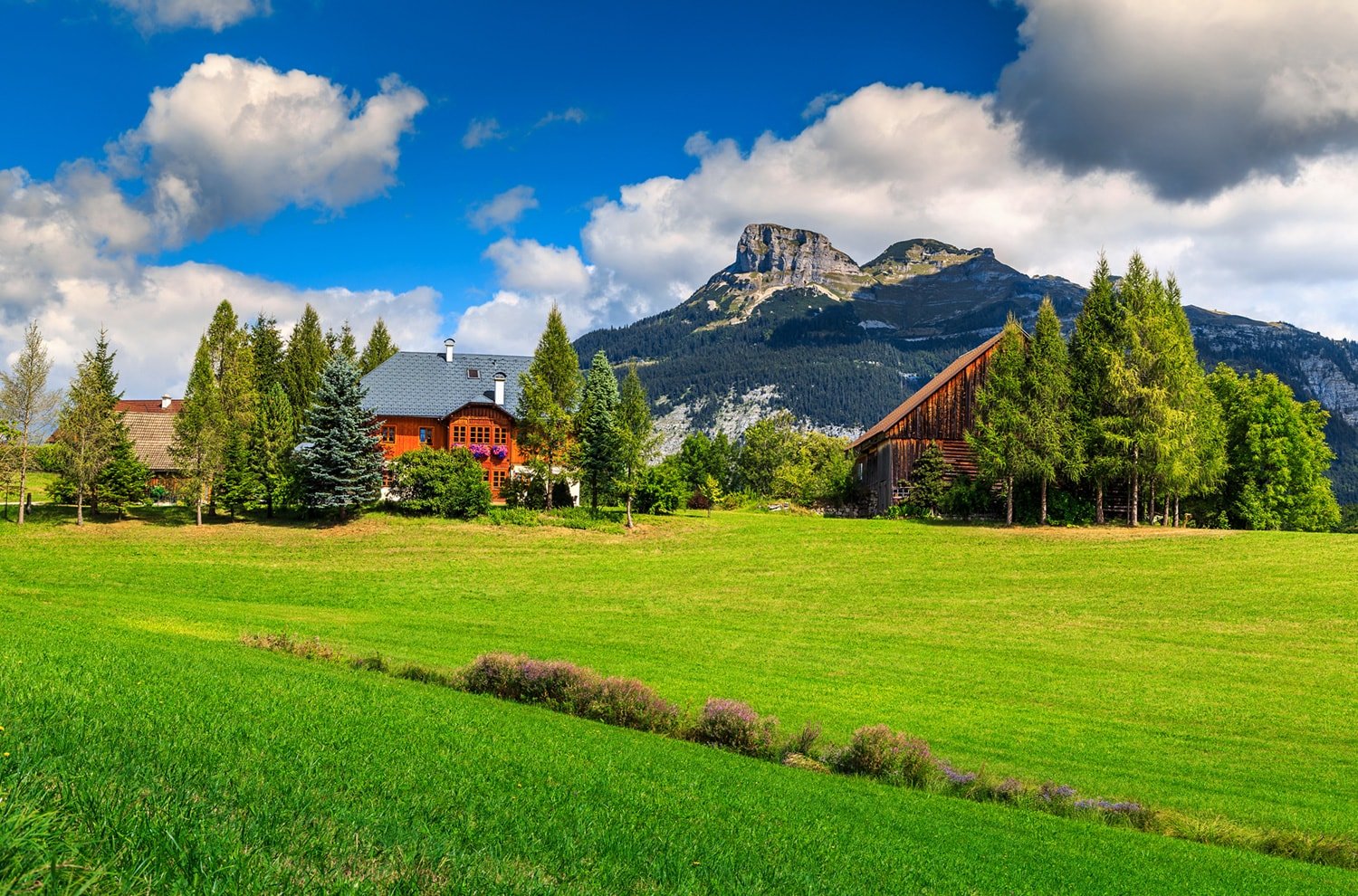
Visitors to this region have a wide variety of options to stay including in ancient historic hotels, known as Schloss hotels or at modern villas converted into bed and breakfasts or modern hotels, and choose from a wide variety of restaurants offering from home cooked Austrian fare to fine dining, and several shops selling linens, ceramics, woodcarvings and painted glass of the region.
WHEN TO VISIT SALZKAMMERGUT

July to early September is an ideal time for swimming in the mountain lakes, which would be chilly during the other months. The warmest lakes are the Wolfgangsee and Mondsee. Spring and autumn are the shoulder season when the weather is unpredictable. In midsummer, sudden short showers are common. The Dachstein mountains offer good skiing experience once the snow settles, from December to March.
HOW TO REACH
By Air
By Train and Bus
Buses reach areas where trains don’t. Given enough time, you can cover all areas by public transportation.
The main bus routes:
• From Bad Ischl to Gosau, Hallstatt, Salzburg and St. Wolfgang.
• From Mondsee to St. Gilgen and Salzburg
• From St. Gilgen to Mondsee
• From Salzburg to Bad Ischl, Mondsee, St. Gilgen and Strobl
GETTING AROUND IN SALZKAMMERGUT
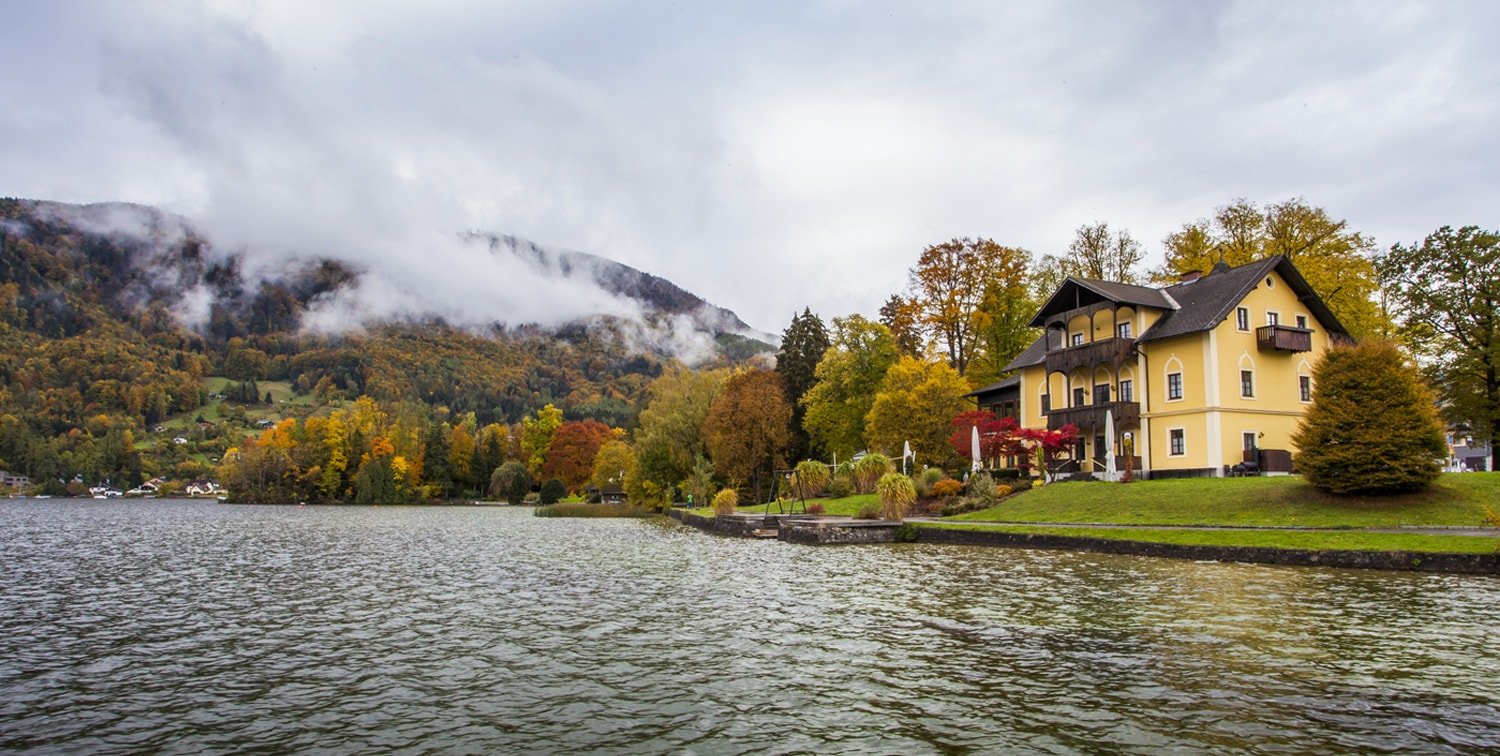
By Train
• Attnang-Puchheim on the Salzburg–Linz line
• Stainach-Irdning on the Bischofshofen–Graz line
• Trains reach Attersee too.
The journey is made in 2 ½ hours by trains at one hour frequencies. There are no staff in small stations. If in an unbesetzter Bahnhof (unattended train station), use a platform ticket vending machine or pay on the train.
By Bus
There are regular services connecting almost all towns and villages in the Lake District though during weekends the services are skeletal. Every hour, buses leave Salzburg to various other towns, including Bad Ischl, Mondsee and St. Wolfgang. Check www.busbanbim.at , for services from Styria.
Boats
There are boats that ply between Attersee, Traunsee, Mondsee, Hallstätter See and Wolfgangsee and could be a pleasant if not a very fast way to travel throughout the Lake District.
TOP PLACES TO VISIT
Hallstatt
Bad ischl
St. Wolfgang
St. Gilgen & Strobl
Gosau am Dachstein
Mondsee & The Mondseeland
Fuschlsee
HALLSTATT

Described as the ‘world’s prettiest lakeside village’ on innumerable postcards, the town appears perched precariously on a small area of land, almost a toehold, on the shore of the lake that would tumble down anytime into the dark waters of the Hallstättersee.
It is situated on the narrow stretch of land between the mountain and the shore and one needs a boat to cross the serene waters as you arrive from the train station, which is on the opposite side of the river. The area occupied by the village is so small that its annual Corpus Christi festival takes place on small boats on the lake due to lack of space on land.
From the top of the mountains, the powerful waterfall, the Mühlbach, captures your attention immediately, and is a majestic sight that you would not let go of for a long time. Hallstatt was the village where the emperor Franz Josef took his fiancé, Elisabeth on an excursion on the day of their engagement, and since those days, the town has been attracting tourists like a magnet. This does mean that the village could be a bit more modern than expected and oriented towards the tourist circuit, which is surprising given that Hallstatt is the oldest community in Austria.

The Hallstatt Market is the centre of activity here. On the edge of the town near the funicular to the Salzbergwerk is Hallstatt Lahn where is the bus station and across the lake from Hallstatt is the train station. A ferry from the train station will take you into town.
Mount Dachstein is visible from the lakeside. This mountain and the huge Sechserkogel range makes us aware of that we are right in the middle of pristine alpine landscape. A train journey to Hallstatt will present a stunning view of the cliffs, the mountains are so close to the water that there is only a tiny strip of land on which the town has come up, not leaving space even for a railway track. The station is hence on the opposite shore from where visitors are taken to the town by ferry. Hallstatt has no place for any sort of transportation that cannot be supported by boats.
WHAT TO SEE IN HALLSTATT
Salzbergwerk
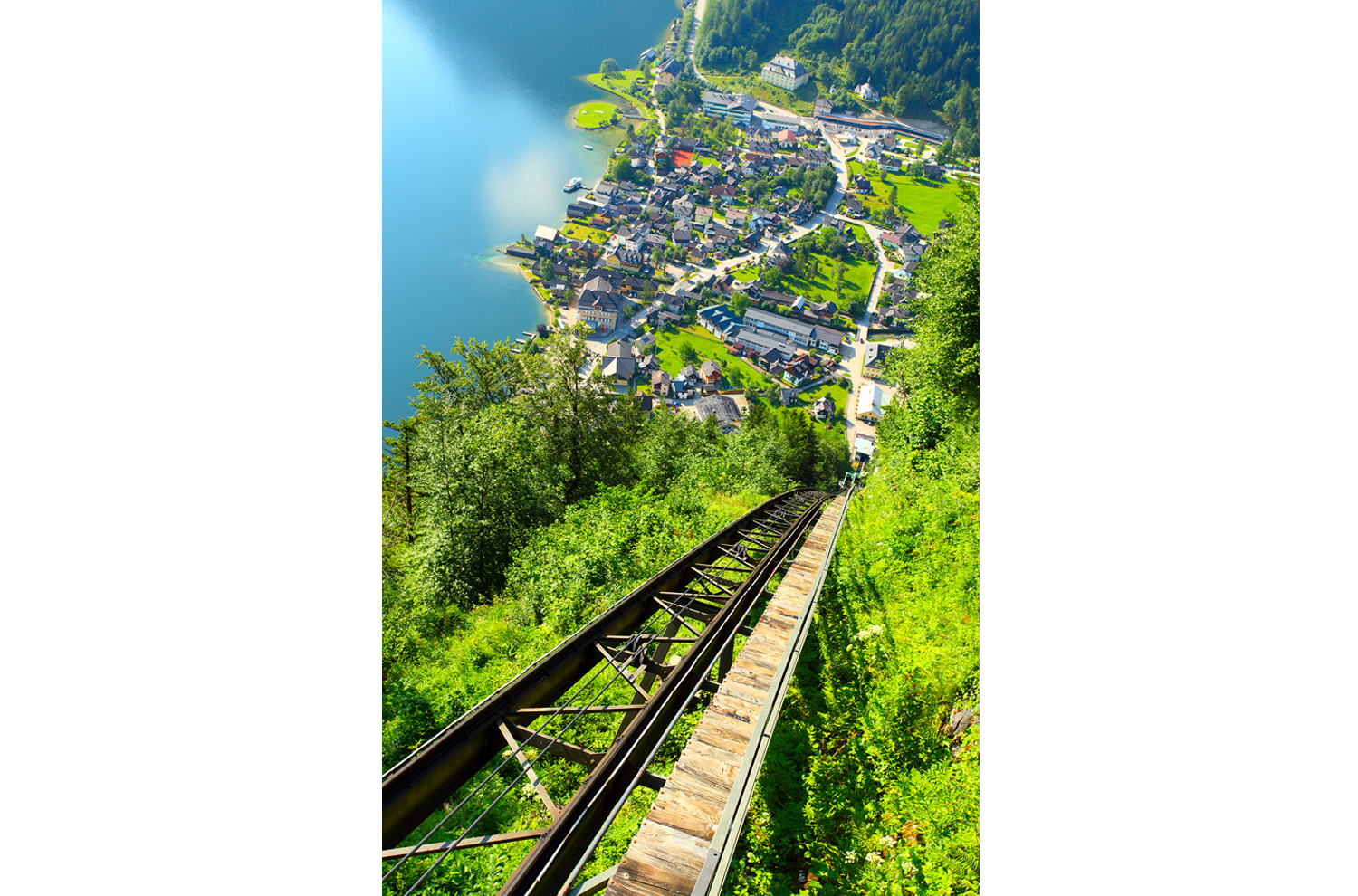
For over 4500 years, this area has been mined for salt. The Hallstatt mines of the Salzberg (not ‘burg’) mountain are the oldest in the world. These mines in the Salzbergtal valley are accessed either by the path near the village cemetery paths or via the funicular railway from the southern end of the village. A small-scale miner’s train that heads to the mountain can be reached within a 10-minute walk from the railway station. The wooden chutes once used by the miners are still preserved well, in which you can slide down to an artificial subterranean lake that was once used to dissolve rock salt. An Iron Age cemetery and a 21st Century restaurant is at the entrance of the mines. A combo ticket to Salzerlebnis (Salt Adventure), from OBB (Austrian Railway) offers an all-inclusive fare to, from and within Hallstatt and the salt mine.
Dachstein Ice Caves
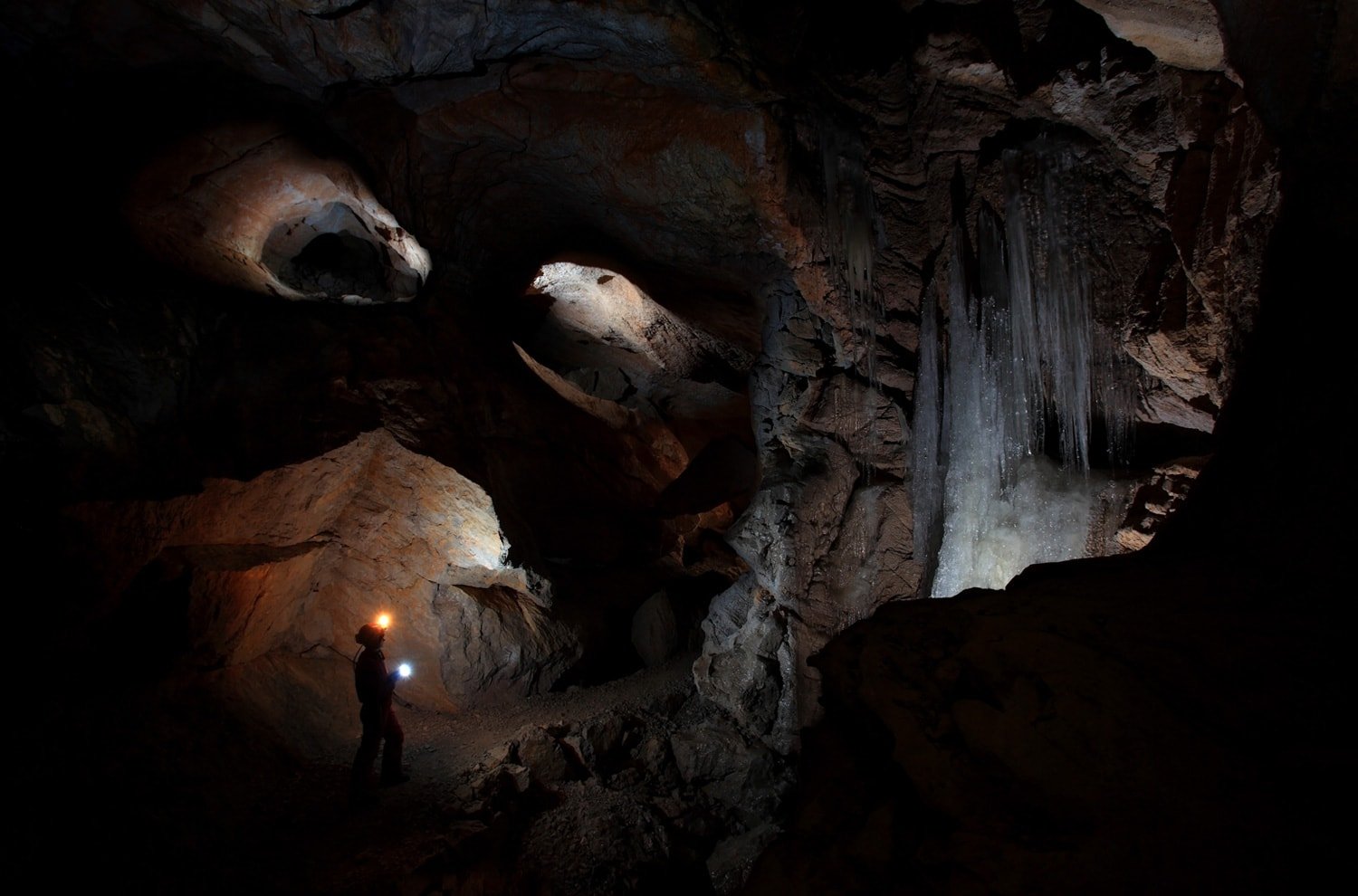
Michaelerkirche (St. Michael’s)
Colourful 16th century houses and an equally picturesque 16th century gothic church dots the now pedestrian area of the Hallstatt market square. The church with its spectacular winged altar with its nine 15th century paintings is a beautiful place indeed. The nearby Karner (charnel house), though morbid, is also a visited by tourists regularly.
Over the centuries, when there arose a space constraint to bury the dead, the locals developed a custom of digging up the bodies 12 or 15 years after the burial, piling up the bones in the sun and painting the skulls and storing the one upon the other. Ivy and oak leaf wreaths were used for men and alpine flowers for women and meticulously documented their names, dates and cause of death. These skulls are on display in the charnel house, also known as the ‘Beinhaus’ (bone house), behind the cemetery.
At the end of May every year, the summer season begins with Fronleichnahm (Corpus Christi) procession. The festivities conclude with people in hundreds of boats celebrating on the lake, and is a very popular event on the calendar for locals and tourists alike.
Schifffahrt Boat Trips
There are boat tours around the lake via Obertraun to the south (50 minutes) or Obersee to the north (80 minutes), which are run by the same company that ferries train passengers across the lake to Hallstatt. Tourists also have an option of inter-spreading boat trips with hiking along the shore.
Weltkulturerbe Museum
The museum covers the region’s Iron Age, Celtic history and salt mining industry and also displays Roman excavations in a shop below. Some of these excavations can also be seen in the shop opposite the tourist office or near the Salzbergwerk, where there is an exhibition grave. All explanations in the museum are in German and English.
BAD ISCHL
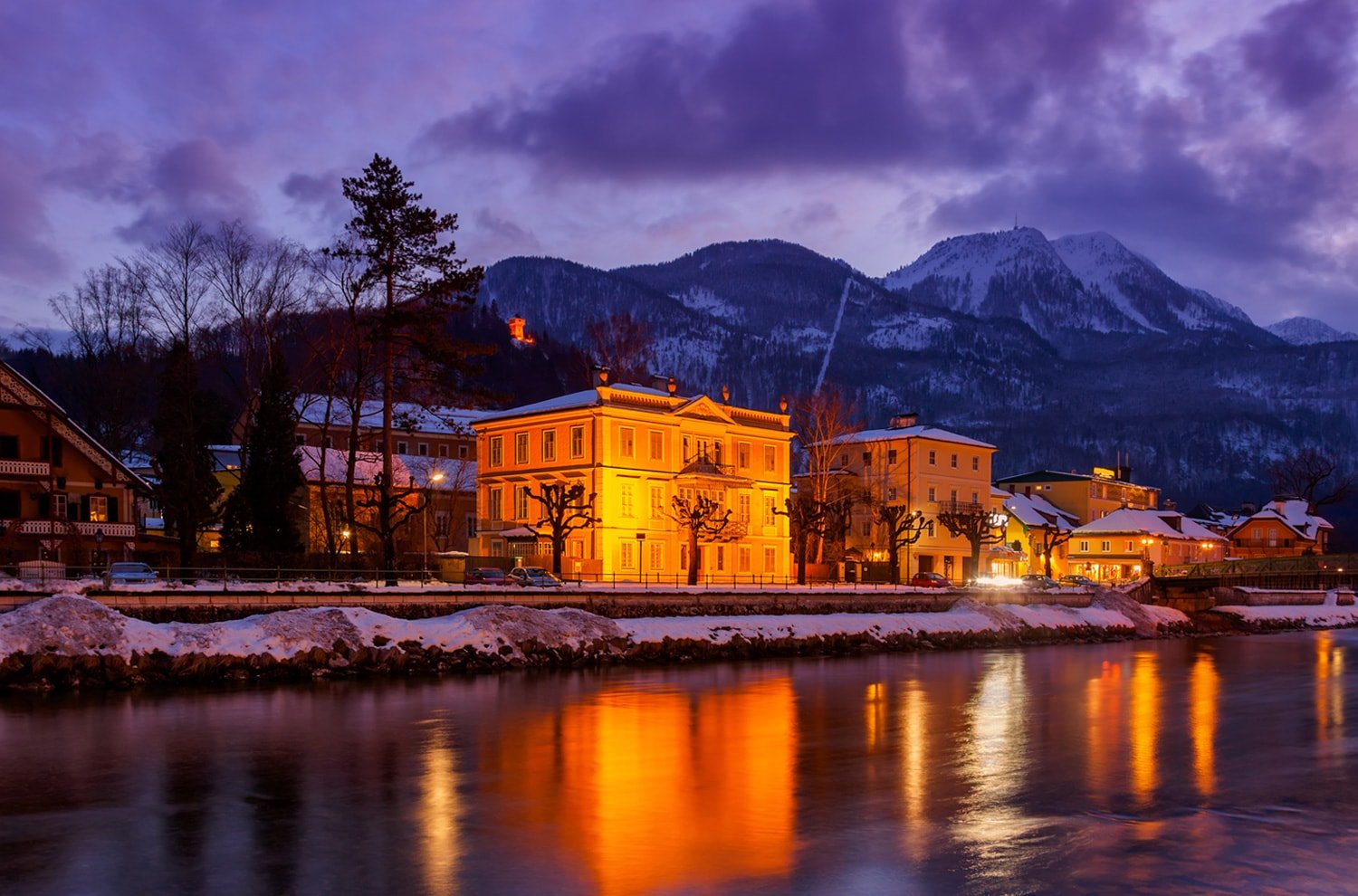
The famous Zauner’s pastry shop is located in Bad Ischl. Connoisseurs flock the place for its coffee and lemon sponge cake, Guglhupf, topped with raisins and nuts. The community still symbolizes the spirit of old Austria including impressive balls, waltzes and operettas that continue to be a big draw for people in search high culture.
Located on a peninsula between River Traun and River Ischl, the town is laid out beautifully on the peninsula. The shaded Esplanade provides a charming ambience for a stroll. This is where the elite of the 19th century used to frequent, usually after a quick stop at the spa, Trinkhalle, which still stands in mid-town Ferdinand-Auböck-Platz.
When the Hapsburg princess, Sophie, was miraculously cured of her infertility after she took treatment in this spa town in 1828, its reputation grew manifold. Within two years, she gave birth to Emperor Franz Josef I and later to two more sons, who were nicknamed the Salzprinzen (Salt Princes). Franz Josef took it upon himself to make an annual pilgrimage to Bad Ischl, like a salmon that returns to its birth place and he made it his summer home for the next 60 years, thus drawing much of the European aristocracy to this region. This is where he met and fell in love with this future empress, Sisi.
Unfortunately, Bad Ischl also witnessed his signing the war declaration on the kingdom of Serbia, which sparked off WWI
WHAT TO SEE IN BAD ISCHL
Kaiservilla

The great grandson of Franz Josef, Archduke Markus Salvator von Habsburg-Lothringen still lives here. The other parts of the building can be seen on the tour including the ornate reception rooms and surprisingly modest residential quarters. You could be even lucky if the archduke himself conducts the tour, as he does some times.
It was at this villa that the emperor signed the war declaration against Serbia. Habsburg artefacts and sometimes tragic family mementos fill the villa, like the cushion on which the head of Empress Elisabeth rested after she was stabbed by an Italian assassin in 1898.

Museum Der Stadt Bad Ischl
This museum is located in the current Hotel Austria, which was actually the favourite summer residence of Archduke Franz Karl and wife Sophie. The young Franz Josef got engaged to Elisabeth here in 1853. The various exhibits dealing with the region’s salt mining, royal and folk histories, the gardens and the Brahms monument in it can be explored. The display of national folk costumes used by the emperor for hunting is particularly impressive. The museum displays the famous Kalss Krippe, an enormous mechanical Christmas crèche, from December to early February. It has about 300 figures and dates from 1838. The Christmas cribs made by the townsfolk of Ischl is very famous. Many private houses open their doors to visitors on tour from after Christmas until January 6.
Photo Museum
Built near Kaiservilla, the small ‘marble palace’ is very elegant. Empress Elisabeth used it as a teahouse. It now houses a photography museum, a permanent collection that offers an overview of the history of analog photography, with a tribute to the empress Elisabeth. The marriage between Franz Josef and Elisabeth was not a happy one, evidence of which can be found in the names of many houses in Bad Ischl that are named after many of the emperor’s lady friends, like the Villa Schratt, which was given to the “official” mistress of the emperor, Katharina Schratt. An entrance ticket to the museum lets you into the park grounds too.
ST. WOLFGANG
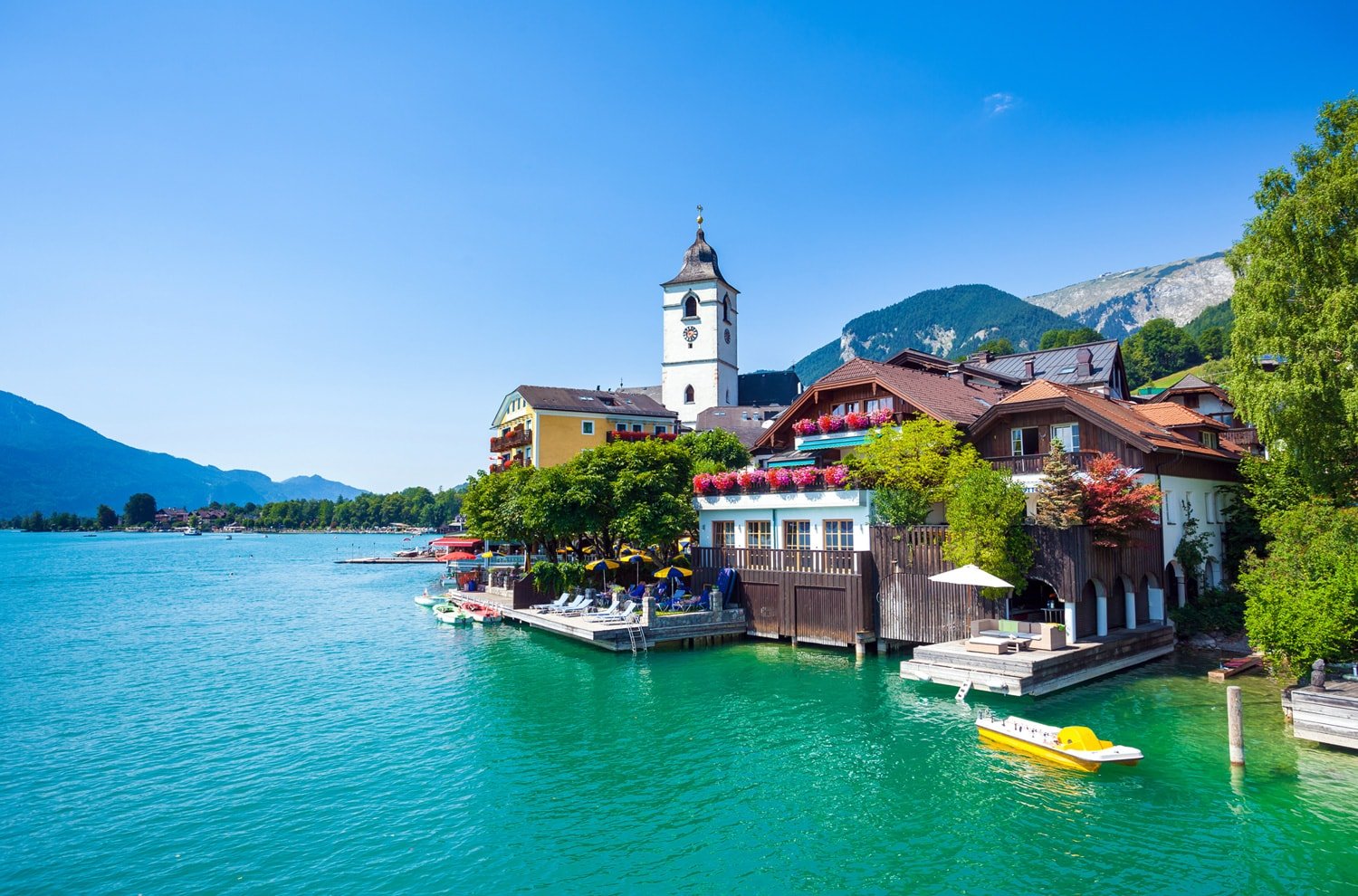
A beautiful town located on the steep banks of the Wolfgangsee, St. Wolfgang, has its streets choked with tourists during the day, but as it turns evening, we see an ebb in the flow and is ideally the best time for a serene stroll along the lake with its heavily wooded shores and old boat houses.
Pilgrimage was the town’s main reason to fame and so it is even today, as its 14th century pilgrimage church is still visited by throngs of pilgrims and tourists.
Be it hiking or swimming in summer, or cross-country skiing in winter, nature’s beauty is everywhere for you to savour. It was the Weisses Rössl inn, built in 1878, right next to the landing stage, that made St. Wolfgang famous because Ralph Benatzky’s 1930 operetta was the main fixture in this inn.
WHAT TO SEE IN ST WOLFGANG
Schafberg
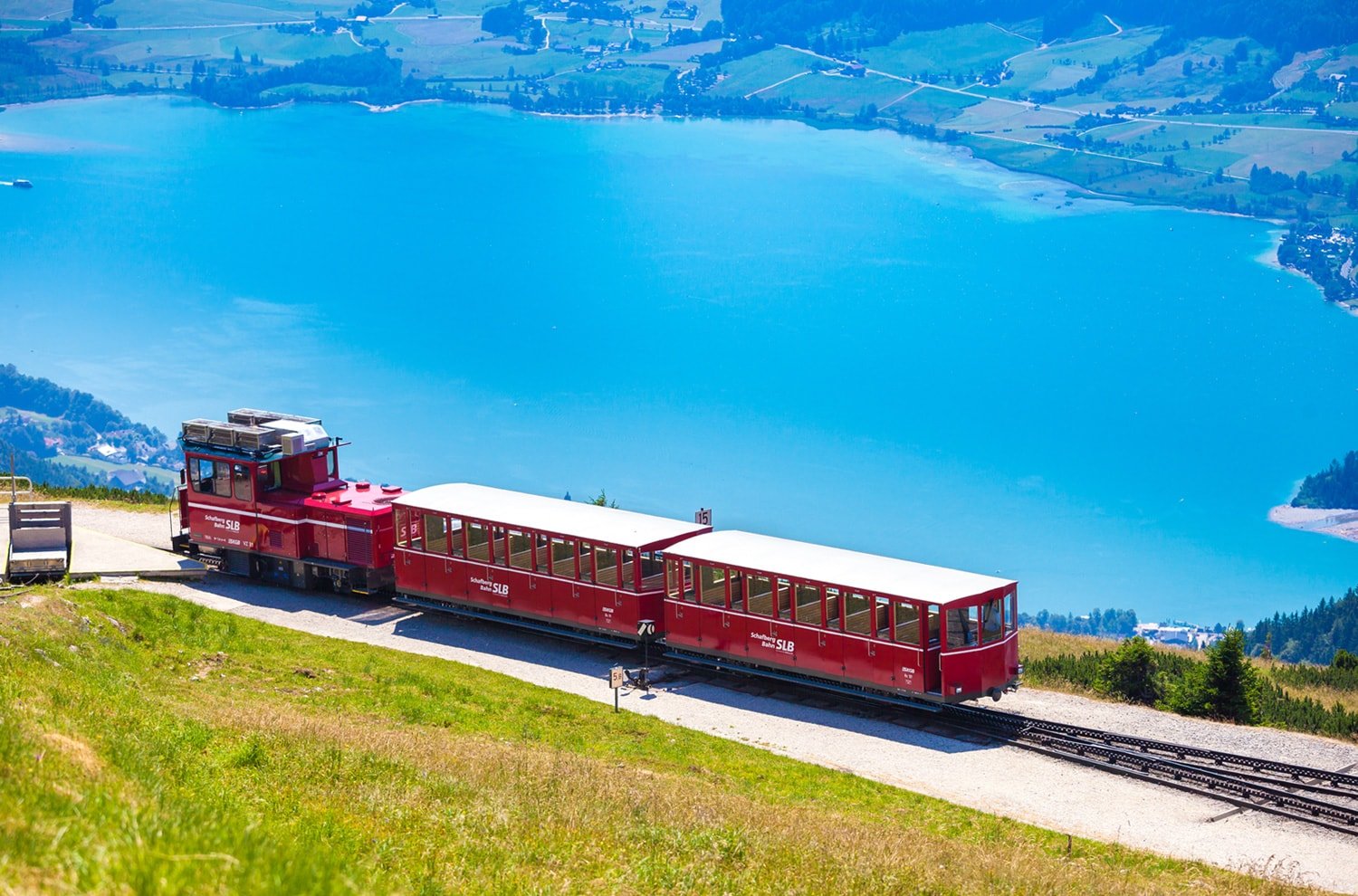
Schafbergbahn – The historic steam train dates back to 1893, and doesn’t run in bad weather. Tickets can be purchased on the train. At least half a day is required for this outing.The train runs from end of April to mid-October and during Advent weekends (Advent begins four Sundays before Christmas and ends on Christmas Eve), weather permitting.
Wallfahrtskirche St. Wolfgang (pilgrimage church)

The carvings and paintings found on this altar were used as an Armenbibel (a Bible for the poor). On a sunny day, the interior of the church will offer a beautiful sight of sunlight reflected off the lake that dances on the ceiling through the stained-glass windows.
ST. GILGEN & STROBL
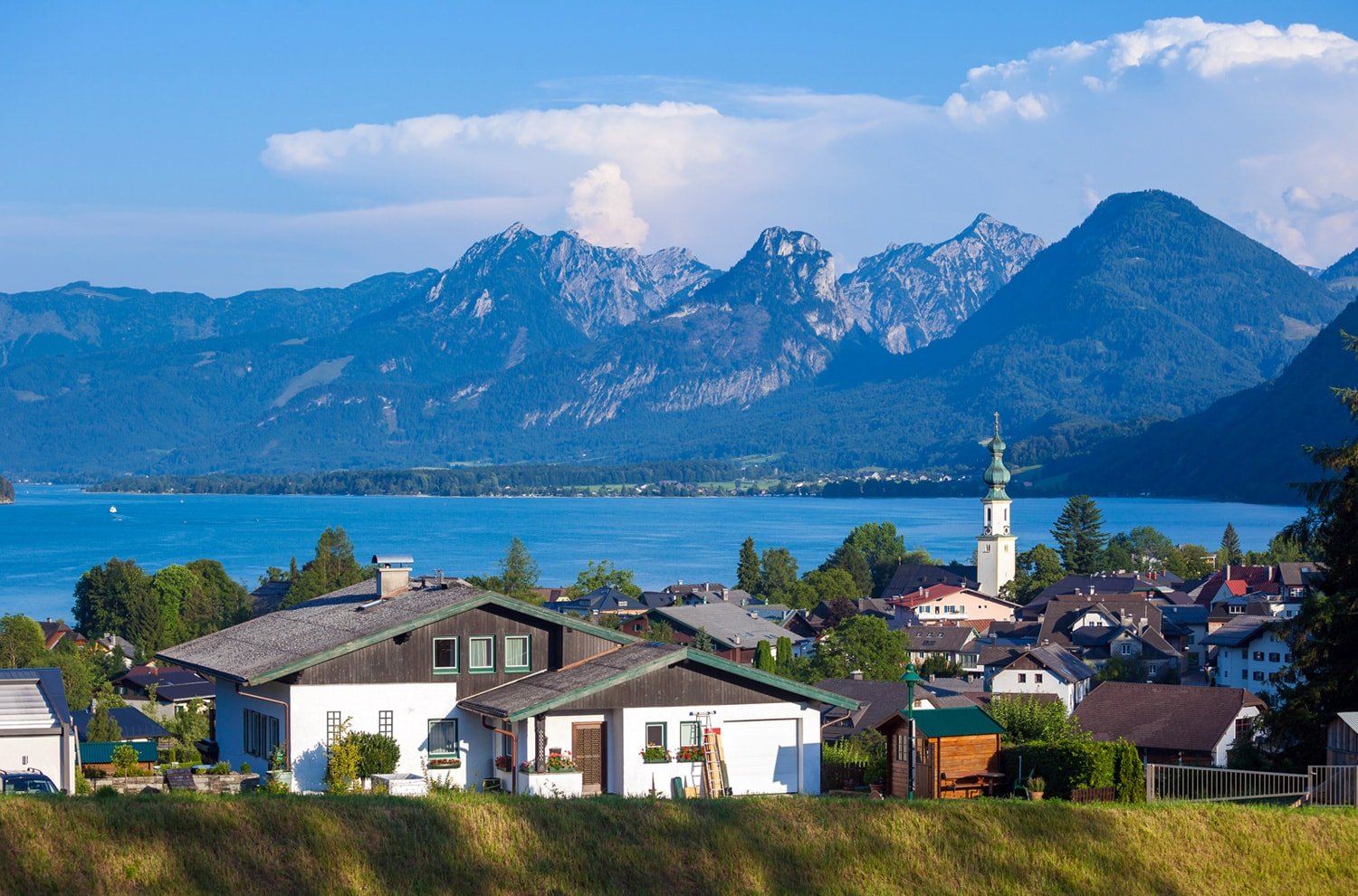
The popular Christmas market is held around the main market square every December. The baroque houses present a perfect picture for the venue.
Wolfgang Amadeus Mozart’s mother was born in St. Gilgen. A memorial site dedicated to Mozart (Mozart Gedenkstätte) is open to visitors in Bezirksgericht, the country court. His sister Nannerl also came to St. Gilgen at the later part of her life, when she married a local civil servant.
The beauty of St. Gilgen is best enjoyed during a leisurely walk covering the promenade and lakeside. The local mountains offer opportunities for hiking, which could be a bit strenuous though.
Alternatively, you can take a cable car up the Zwölferhorn Mountain. Swimming in the serene lake and other water sports can be enjoyed in the tranquillity of the village, Strobl. This region can be used as a base for hiking trips. You can also ride the popular summer tobogganing rail (Sommerrodelbahn) near Strobl.
GOSAU AM DACHSTEIN

To have a good all round experience of the area, take a walk that would take no more than 2 ½ hours. It is a better option than driving around the area. Start your walk from the tourist information office that is near the crossroads known as the Gosaumühle. The road goes over the meadows and passes by the churches. It is a romantic trail, from Gosauschmied Café onwards through the forest to Vorderer Gosausee, the first Gosau lake. This lake is located 8 km south of the village and is its crown jewel. The majestic Dachstein massif is reflected beautifully in the lake’s water that forms a fjord like basin.
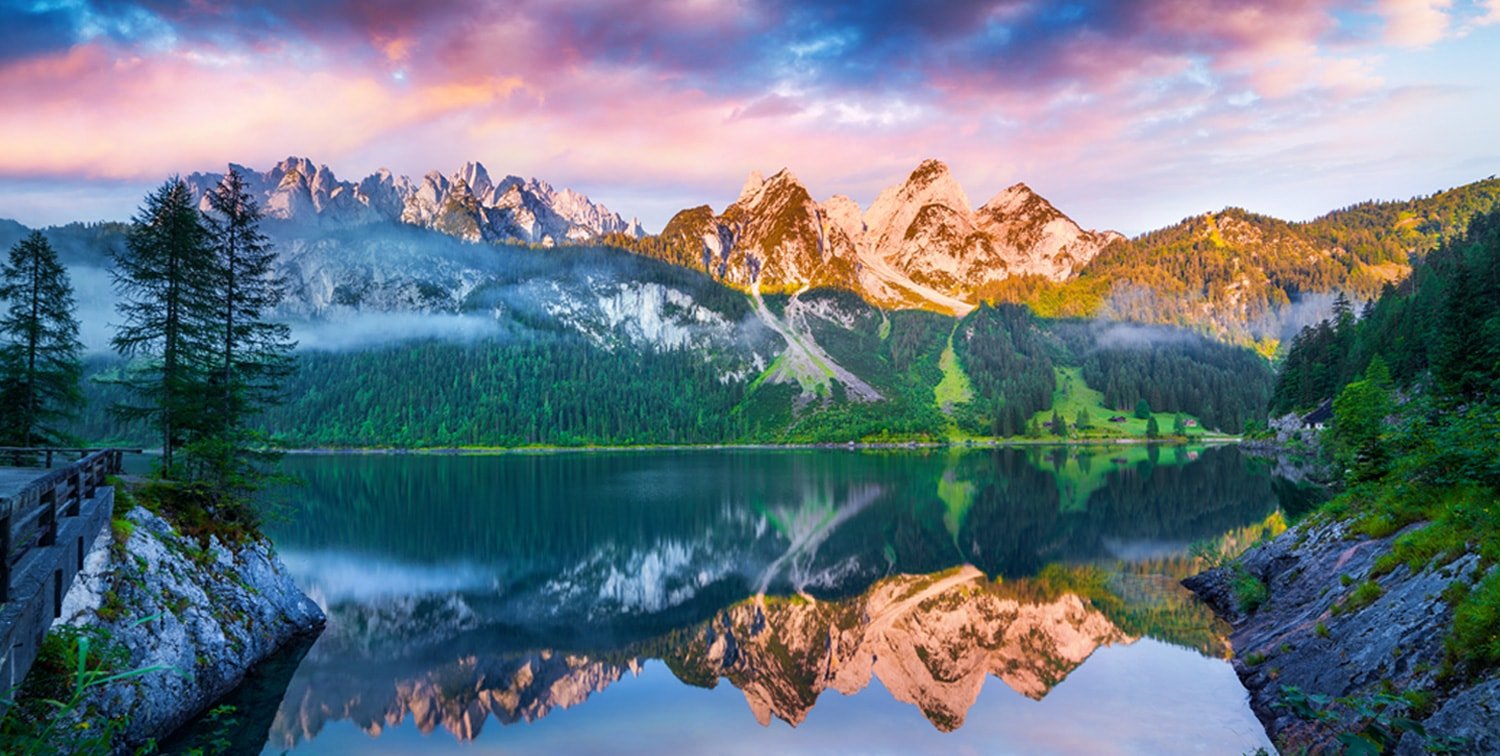
Many Gasthöfes (guesthouses) offer a peaceful night’s stay in the Gosau village. Reserving ahead is recommended. You can also choose to stay in Privatzimer accommodations. A dinner of fried Schwarzrenterl, a delicious lake fish delicacy, would definitely make your day.
MONDSEE & THE MONDSEELAND

The scenic lakeside promenade is a common yet charming feature of the Lake District area. Yachting and other water sports are available. The stunning Mondsee lake in an alpine setting on the bare rock of Drachenwand (dragon wall) cliffs is a magnificent sight. The market square is resplendent with its former monastery and the church.
FUSCHLSEE


